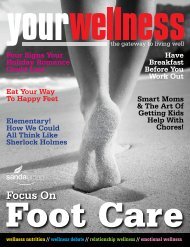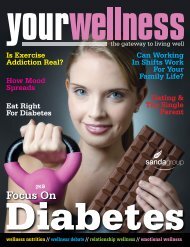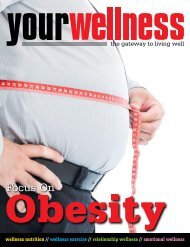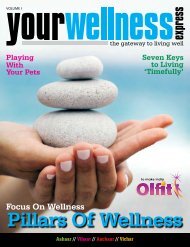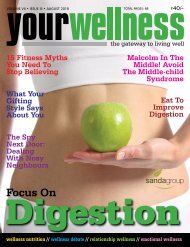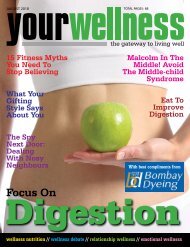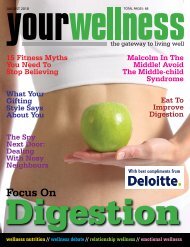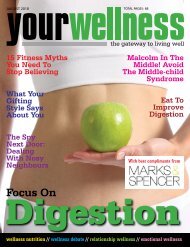New India_Assurance_ISSUE_July-2018
You also want an ePaper? Increase the reach of your titles
YUMPU automatically turns print PDFs into web optimized ePapers that Google loves.
33<br />
Exercise Of The Future?<br />
Genomics-based &<br />
Customised!<br />
For years, scientists have<br />
studied the effects of different<br />
types of exercise on the human<br />
body, but never before at the<br />
level of molecular precision,<br />
says new research.<br />
Exercise in the future<br />
could be customised for<br />
people based on genomics,<br />
according to a study by<br />
Arizona State University and<br />
the Translational Genomics<br />
Research Institute. Their study,<br />
published in the ‘Journal<br />
of Applied Physiology’, has<br />
characterised some of the<br />
molecular changes that happen<br />
in muscle tissue following<br />
different types of exercise,<br />
specifically resistance exercise<br />
like lifting weights, versus that<br />
of aerobic exercise (in this<br />
study, cycling).<br />
Researchers used advanced<br />
technology like Whole<br />
Transcriptome RNA Sequencing<br />
(WTSS), which is nextgeneration<br />
sequencing to reveal<br />
the presence and quantity of<br />
RNA in a biological sample,<br />
to identify genes that were<br />
affected uniquely by each type<br />
of exercise. The researchers<br />
took muscle samples from six<br />
men, between the ages 27-30,<br />
before their exercises, and<br />
again at one hour and four<br />
hours following both weight<br />
lifting and cycling.<br />
The study found 48 unique<br />
genes following aerobic<br />
exercise, and 348 unique genes<br />
following weight lifting, that<br />
were ‘differentially expressed’,<br />
meaning the exercises made the<br />
genes more powerful or less<br />
powerful, like a dimmer switch<br />
on a chandelier.<br />
“This data shows that<br />
different exercises elicit<br />
unique molecular activity in<br />
skeletal muscle,” says Dr Jared<br />
Dickinson, the study’s lead<br />
author. “These findings support<br />
the need for additional research<br />
that better identifies how<br />
exercise strategies can be used<br />
to target specific molecular<br />
responses in the muscle tissue,<br />
which could have implications<br />
for those that suffer from<br />
abnormalities in muscle.”<br />
The use of RNA sequencing<br />
in the research was significant<br />
because it provided a broader<br />
range of analysis, especially for<br />
genes expressed at low levels.<br />
This, along with increased<br />
specificity and the ability<br />
to identify novel genes that<br />
otherwise might not be detected<br />
through lesser technologies.<br />
The study has also found<br />
that aerobic exercise increased<br />
expression of one specific<br />
gene associated with greater<br />
oxygen capacity. The ESRRG<br />
gene improves endurance,<br />
enhanced development of blood<br />
vessels and is also important<br />
in improving function of<br />
mitochondria, the powerhouse<br />
of cells.<br />
The researchers hope to find<br />
better ways to promote muscle<br />
health by better understanding<br />
the unique molecular processes<br />
stimulated by different types<br />
of exercise. They also maintain<br />
that this research could lead<br />
to more effective exercise<br />
interventions that target<br />
abnormalities associated with<br />
specific muscle dysfunctions.<br />
Says senior author Dr<br />
Matt Huentelman, “We hope<br />
to leverage these findings<br />
into more precise exercise<br />
recommendations in the future<br />
- ones that are tailored to an<br />
individual not only based on<br />
their physiological needs but<br />
also based on their molecular<br />
response to exercise.”<br />
<strong>July</strong> <strong>2018</strong> • Issue II • Volume VII • yourwellness.com







